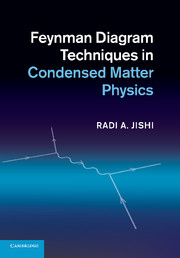Book contents
- Frontmatter
- Contents
- Preface
- 1 A brief review of quantum mechanics
- 2 Single-particle states
- 3 Second quantization
- 4 The electron gas
- 5 A brief review of statistical mechanics
- 6 Real-time Green's and correlation functions
- 7 Applications of real-time Green's functions
- 8 Imaginary-time Green's and correlation functions
- 9 Diagrammatic techniques
- 10 Electron gas: a diagrammatic approach
- 11 Phonons, photons, and electrons
- 12 Superconductivity
- 13 Nonequilibrium Green's function
- Appendix A Second quantized form of operators
- Appendix B Completing the proof of Dzyaloshinski's rules
- Appendix C Lattice vibrations in three dimensions
- Appendix D Electron-phonon interaction in polar crystals
- References
- Index
6 - Real-time Green's and correlation functions
Published online by Cambridge University Press: 05 April 2013
- Frontmatter
- Contents
- Preface
- 1 A brief review of quantum mechanics
- 2 Single-particle states
- 3 Second quantization
- 4 The electron gas
- 5 A brief review of statistical mechanics
- 6 Real-time Green's and correlation functions
- 7 Applications of real-time Green's functions
- 8 Imaginary-time Green's and correlation functions
- 9 Diagrammatic techniques
- 10 Electron gas: a diagrammatic approach
- 11 Phonons, photons, and electrons
- 12 Superconductivity
- 13 Nonequilibrium Green's function
- Appendix A Second quantized form of operators
- Appendix B Completing the proof of Dzyaloshinski's rules
- Appendix C Lattice vibrations in three dimensions
- Appendix D Electron-phonon interaction in polar crystals
- References
- Index
Summary
Facts do not ‘speak for themselves’, they are read in the light of theory.
Stephen Jay GouldA many-particle system is intrinsically quite complex. Its energy level spectrum is almost continuous, and the eigenfunctions that correspond to those energy levels are complicated functions of the particles' coordinates. The detailed form of its energy spectrum and wave functions is neither exactly calculable nor measurable; hence, we shall not be concerned with it.
In a typical experimental measurement that involves a many-particle system, a system in equilibrium is weakly perturbed in one or more ways: a particle may be added or removed, a weak electromagnetic field may be applied, a beam of electrons or neutrons may strike the system, a thermal gradient may be established across the system, and so on. Rather than attempting to calculate the full spectrum of a many particle system, it is more useful to concentrate on understanding how a system responds to such external perturbations. The method of Green's function serves this purpose well. In this chapter, we focus on real-time functions for systems in equilibrium. Imaginary-time functions will be introduced in Chapter 8. For systems out of equilibrium, such as those featuring a metallic island between two metal electrodes and an applied bias voltage that causes current to flow through the island, another formalism, that of the nonequililbrium Green's function, is needed; it will be discussed in Chapter 13.
Information
- Type
- Chapter
- Information
- Feynman Diagram Techniques in Condensed Matter Physics , pp. 91 - 129Publisher: Cambridge University PressPrint publication year: 2013
